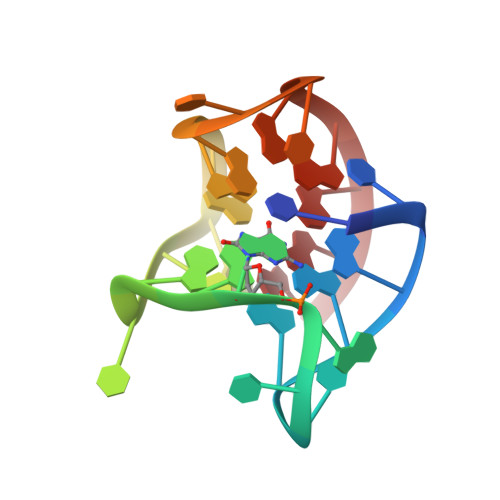Xanthine and 8-oxoguanine in G-quadruplexes: formation of a GGXO tetrad.
Cheong, V.V., Heddi, B., Lech, C.J., Phan, A.T.(2015) Nucleic Acids Res 43: 10506-10514
- PubMed: 26400177
- DOI: https://doi.org/10.1093/nar/gkv826
- Primary Citation of Related Structures:
2MWZ - PubMed Abstract:
G-quadruplexes are four-stranded structures built from stacked G-tetrads (G·G·G·G), which are planar cyclical assemblies of four guanine bases interacting through Hoogsteen hydrogen bonds. A G-quadruplex containing a single guanine analog substitution, such as 8-oxoguanine (O) or xanthine (X), would suffer from a loss of a Hoogsteen hydrogen bond within a G-tetrad and/or potential steric hindrance. We show that a proper arrangement of O and X bases can reestablish the hydrogen-bond pattern within a G·G·X·O tetrad. Rational incorporation of G·G·X·O tetrads in a (3+1) G-quadruplex demonstrated a similar folding topology and thermal stability to that of the unmodified G-quadruplex. pH titration conducted on X·O-modified G-quadruplexes indicated a protonation-deprotonation equilibrium of X with a pKa ∼6.7. The solution structure of a G-quadruplex containing a G·G·X·O tetrad was determined, displaying the same folding topology in both the protonated and deprotonated states. A G-quadruplex containing a deprotonated X·O pair was shown to exhibit a more electronegative groove compared to that of the unmodified one. These differences are likely to manifest in the electronic properties of G-quadruplexes and may have important implications for drug targeting and DNA-protein interactions.
Organizational Affiliation:
School of Physical and Mathematical Sciences, Nanyang Technological University, 637371 Singapore.














